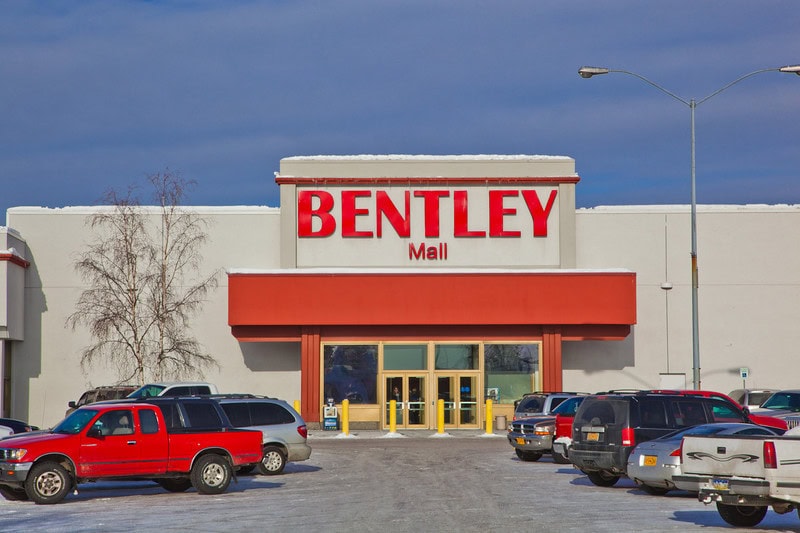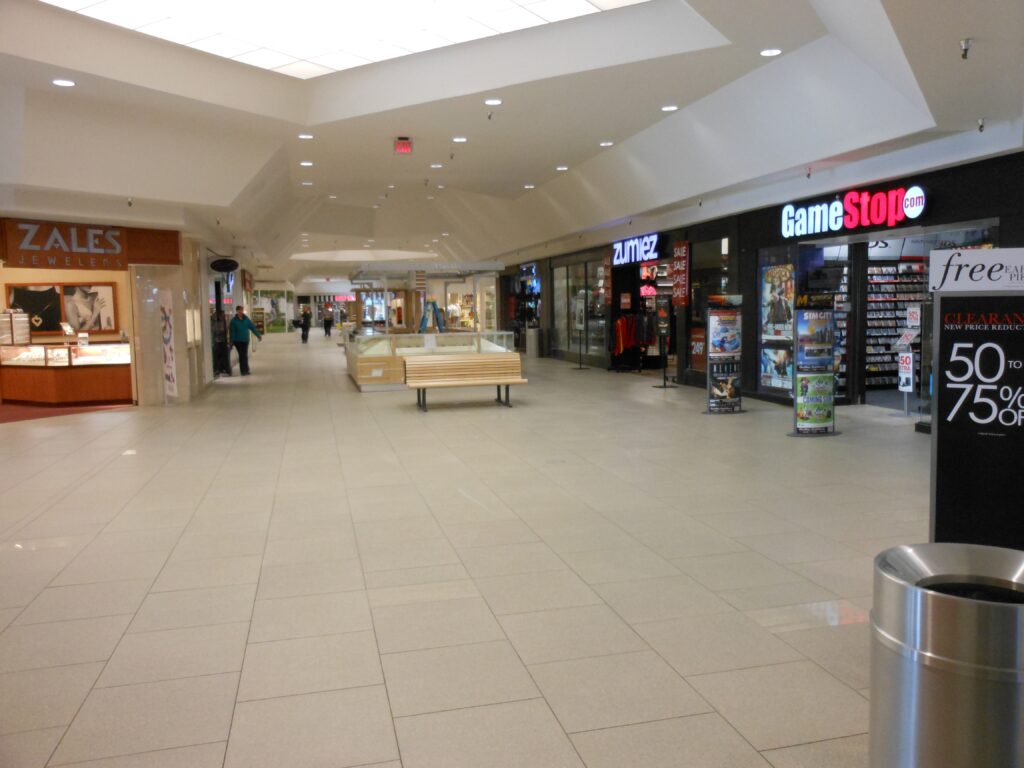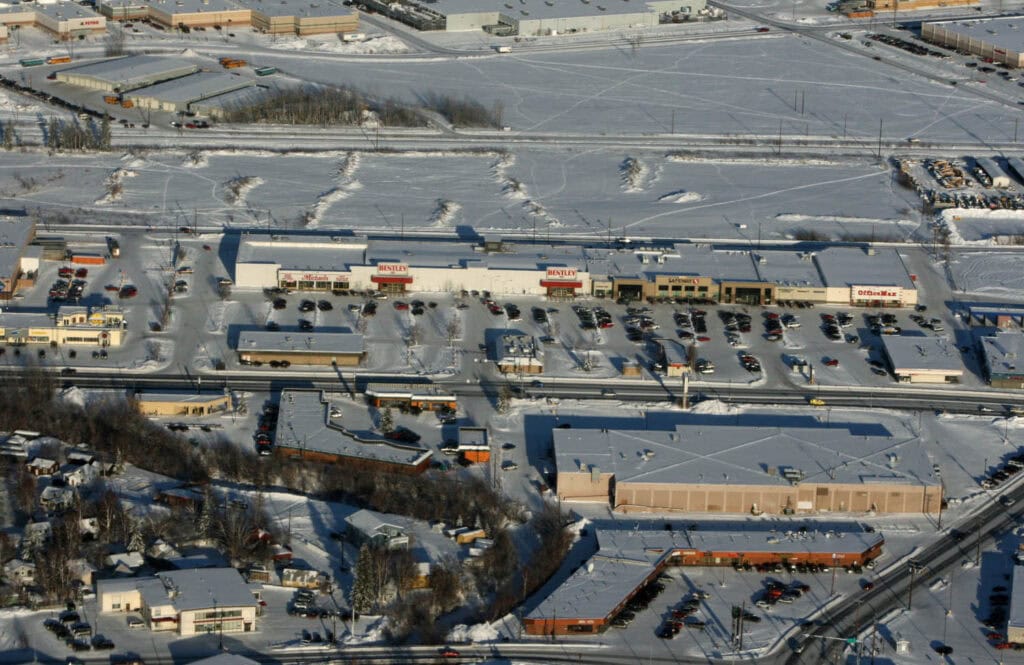Origins and Early Development
Bentley Mall, located in Fairbanks, Alaska, sits on a piece of land with a fascinating past. Long before it became a retail hub, this site was home to Bentley Dairy, a thriving operation established around 1922.
For decades, the dairy was a staple in Fairbanks, providing milk and other products to the local community. The property itself stretched from the Chena River to the foothills along what is now Farmers Loop Road.
By the 1950s, the land had transitioned from agriculture to industrial use. In 1953, Bobby Miller, in partnership with a member of the Bentley family, launched the Miller-Bentley Equipment Company on the site.
This shift reflected Fairbanks' evolving needs as a growing hub during the mid-20th century. Around the same time, the Steese Highway was rerouted near the property, coinciding with the opening of the Wendell Street Bridge.
For the next two decades, the site also housed a large junkyard, giving the area a more utilitarian character.
In 1969, after the Bentley family had no surviving heirs, Miller and his nephew, Cliff Burglin, created the Bentley Family Charitable Trust.
This trust became an important entity, using income from the family's land to support libraries and other charitable causes from Fairbanks to northern California.
By 1974, the Miller-Bentley Equipment Company vacated the property, clearing the way for something entirely new. Construction of Bentley Mall began in 1976, marking the beginning of a new chapter for the area.
When it opened its doors in 1977, the mall introduced Safeway and Pay 'n Save as anchor tenants, offering the people of Fairbanks a modern shopping destination.
For a community that often sought things to do in Fairbanks, Alaska, the mall quickly became a central part of local life.
This rich history, spanning agriculture to industrial use and finally to retail, set the stage for Bentley Mall's early success.
The mall was more than a shopping center - it represented the dynamic changes happening in Fairbanks during the mid-20th century.

Peak Years and Vibrant Community Role
Bentley Mall quickly became a focal point for shopping and socializing in Fairbanks after its grand opening in April 1977. With Safeway and Pay 'n Save, the mall attracted steady foot traffic.
Residents appreciated the convenience of having major stores like these under one roof, especially in a town where weather often made outdoor shopping less appealing.
By the 1980s and 1990s, the mall had hit its stride. Stores like KB Toys, Walden Books, and American Eagle filled its corridors, offering something for nearly everyone. Events and seasonal sales brought families together, making the mall a lively gathering place.
Many locals recall spending Saturday afternoons browsing shelves at Walden Books or picking up the latest sneakers at Foot Locker. Even smaller shops, such as local boutiques and candy stores, found their niche alongside larger chains.
The mall's layout contributed to its success. The single-corridor design, with Safeway and Pay 'n Save at opposite ends, made it easy to navigate.
Customers would often start at one anchor store and work their way through, stopping at smaller shops along the way. This simplicity created a shopping flow that retailers loved, and customers found practical.

Challenges and Decline
The 2000s brought challenges that slowly eroded Bentley Mall's bustling reputation. One of the biggest issues was competition, both local and global.
The rise of e-commerce platforms like Amazon gave shoppers access to a world of products without leaving home. At the same time, new shopping districts in Fairbanks began drawing customers away from the mall.
Retail closures compounded the problem. Pay 'n Save, one of the original anchor tenants, eventually shuttered its doors.
KB Toys followed suit, along with other popular stores like Aeropostale, GameStop, and American Eagle. Each departure left a gap, both physically and emotionally, as fewer stores meant less reason for customers to visit.
High rental costs made it difficult for businesses to survive, especially smaller chains and local retailers.
Many struggled to balance operational expenses with the added burden of shipping costs, a constant challenge for companies in Alaska. Over time, these financial pressures forced even more stores to leave.
The COVID-19 pandemic dealt another blow to the mall, accelerating the shift to online shopping and disrupting in-person retail.
Even as restrictions eased, many businesses were unable to recover, leaving sections of the mall empty. Foot traffic dwindled, and what was once a lively shopping hub began to feel quiet and underused.
Despite these struggles, a handful of stores have managed to hold on. Safeway remains an anchor, joined by Michaels, Zumiez, Foot Locker, and GNC.
These retailers still attract some local shoppers, but the overall atmosphere has changed dramatically from the mall's peak years.

The current State of Struggle
Bentley Mall will continue to operate in 2025, but its vitality has faded. Once a bustling retail destination, the mall now has several vacant storefronts, reflecting its struggle to retain tenants.
Despite its decline, Bentley Mall holds a unique place in Fairbanks' history. For decades, it was the northernmost enclosed shopping mall in North America, a point of pride for the community.
The mall occasionally experiences a boost in activity during community events, such as craft fairs and antique shows, or around the holiday season.
However, these spikes are short-lived. Many residents have shifted their shopping habits to online platforms or larger stores like Costco and Walmart, which offer greater convenience and variety.
The mall's identity as "Bentley Hall" has also become a symbol of its current status. While the name began as a playful nod to its small size and simple layout, it now reflects the reality of fewer shoppers and empty spaces.
Still, some community members expressed hope that the mall could reinvent itself. Ideas like adding restaurants or hosting more events show that locals value the space and want it to succeed.
For those who grew up in Fairbanks, the mall represents a different time. Its history as a community hub, combined with its struggles today, tells the story of how retail and social spaces have evolved in the face of changing consumer habits.
Bentley Mall may no longer be the bustling center it once was, but it remains a part of Fairbanks' cultural landscape.
